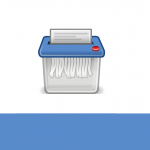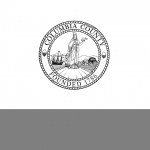December 16, 2025 Town Board Meeting- 630 PM For zoom link- [email protected] Gallatin Town Board Agenda December 2025 … {...}
Drought Watch Issued for New York
New York State Department of Environmental Conservation (DEC) Commissioner Basil Seggos has issued a drought watch for the entire state of New York following consultation with the State Drought Management Task Force and Federal partner agencies.
“While most public water supplies are still generally normal throughout the state, below normal precipitation over the last 9 months, low stream flows, and reduced groundwater levels have prompted the need for this action,” Commissioner Seggos said. “We are encouraging residents throughout the state to conserve water whenever possible during the coming months.”
A watch is the first of four levels of state drought advisories (“watch,” “warning,” “emergency” and “disaster”). There are no statewide mandatory water use restrictions in place under a drought watch. However, local public water suppliers may require such measures depending upon local needs and conditions. The last drought watch in New York State was issued in 2002.
The drought watch is triggered by the State Drought Index, which reflects precipitation levels, reservoir/lake levels, and stream flow and groundwater levels in nine designated drought regions throughout New York. Each of these indicators is assigned a weighted value based on its significance to various uses in a region.
Observed precipitation has been less than normal with shortfalls of 4 to 8 inches common over the last 90 days. The dry weather dates back to the October 1st start of the “water year” and is beginning to significantly affect other water metrics. Stream flows and groundwater levels are well below normal throughout much of the state. Groundwater levels were seasonally worse in June compared to May and they are not expected to improve in the immediate future due to the existing precipitation deficit. For more detailed drought information, please visit DEC’s website.
The following are some conservation tips that homeowners can take to voluntarily reduce their water usage:
- Fix dripping and leaking faucets and toilets. A faucet leaking 30 drops per minute wastes 54 gallons a month.
- Raise your lawn mower cutting height. Longer grass needs less water.
- If your community allows watering, water lawns and gardens on alternate mornings instead of every day. Less frequent watering will develop grass with deeper roots, and early morning watering minimizes evaporation.
- When using automatic lawn watering systems, override the system in wet weather or use a rain gauge to control when and how much water to use. A fixed watering schedule wastes water. Irrigate only when needed.
- Sweep sidewalks and steps rather than hosing them. Eliminating a weekly 5-minute pavement hose-down could save between 625 and 2500 gallons of water per year depending on the flow rate.
For more water saving tips, visit DEC’s website.
“Conserving water is important all year long, but particularly during extended dry periods,” Commissioner Seggos said. “By voluntarily reducing water usage, and being extra careful with fire and outdoor flames, New Yorkers can help conserve our natural resources during these dry days of summer.”





Post a Comment
You must be logged in to post a comment.